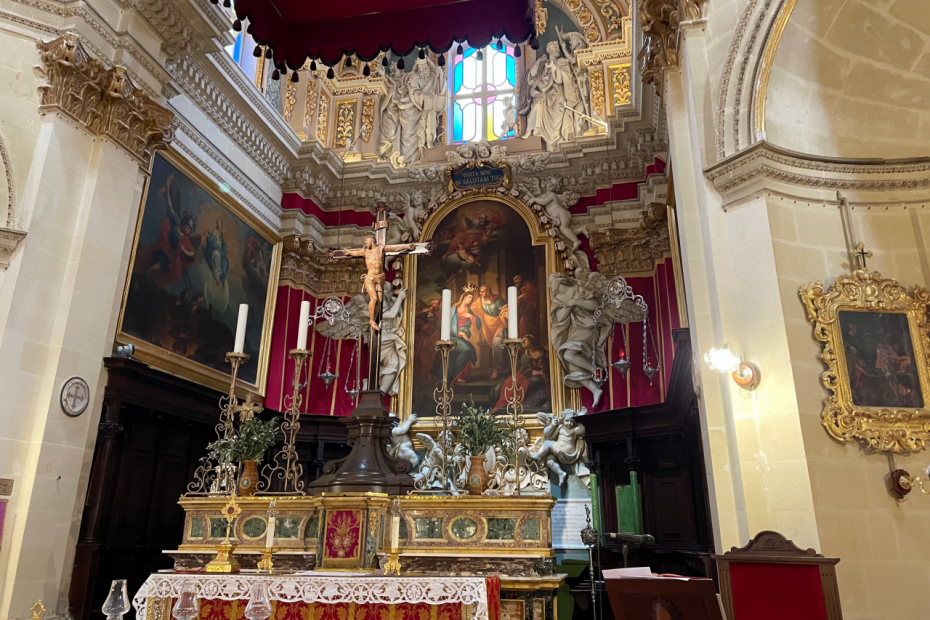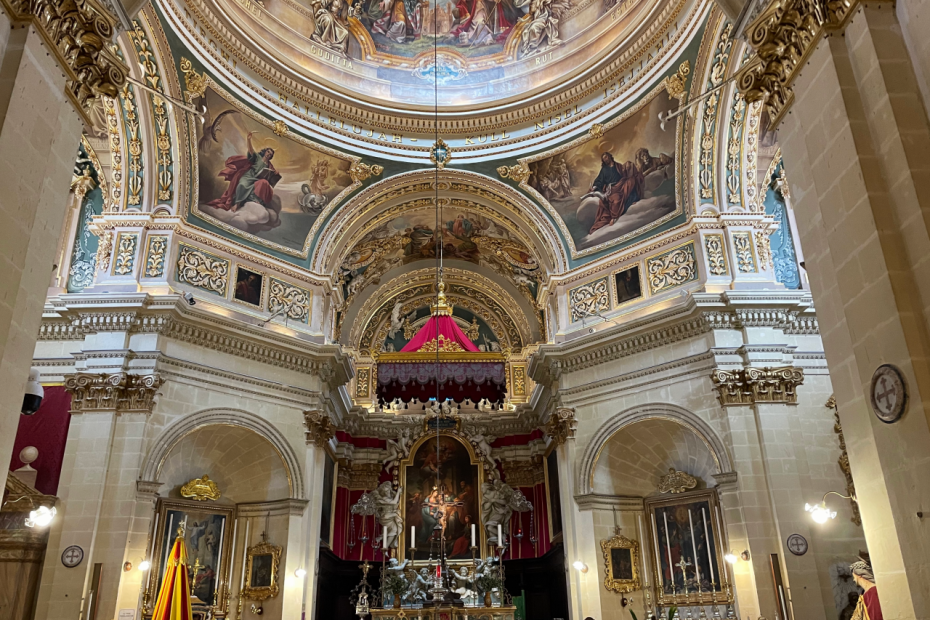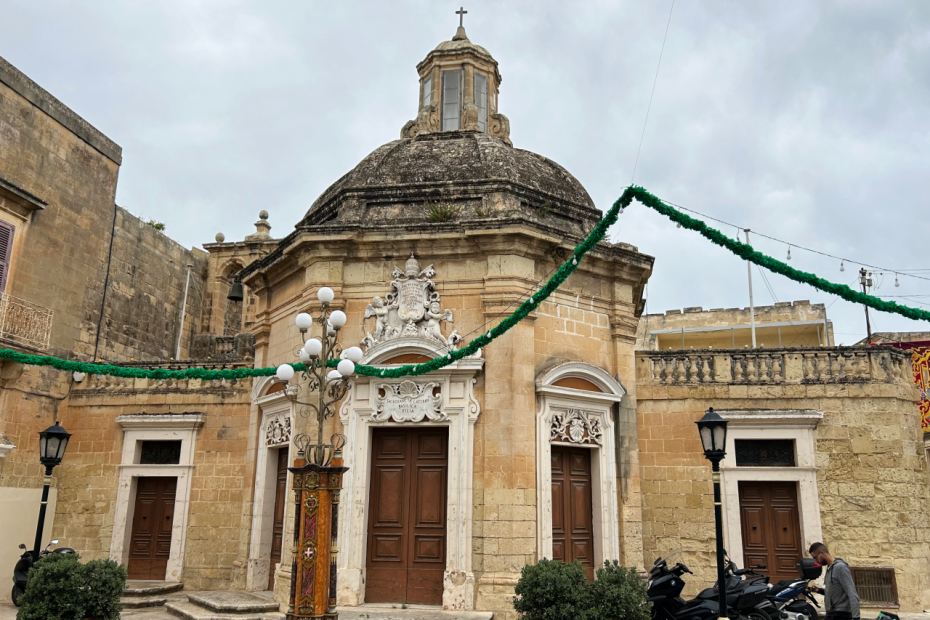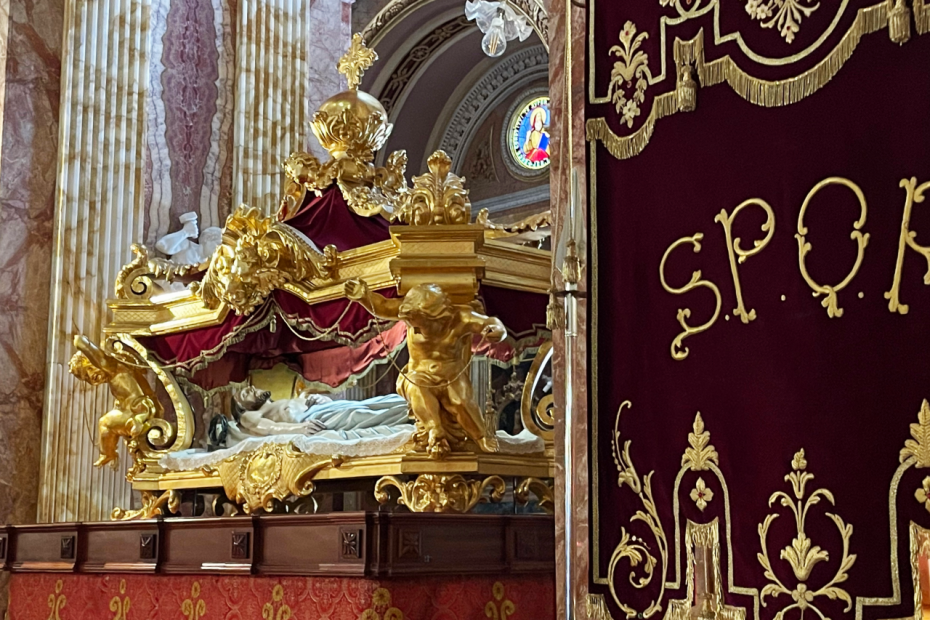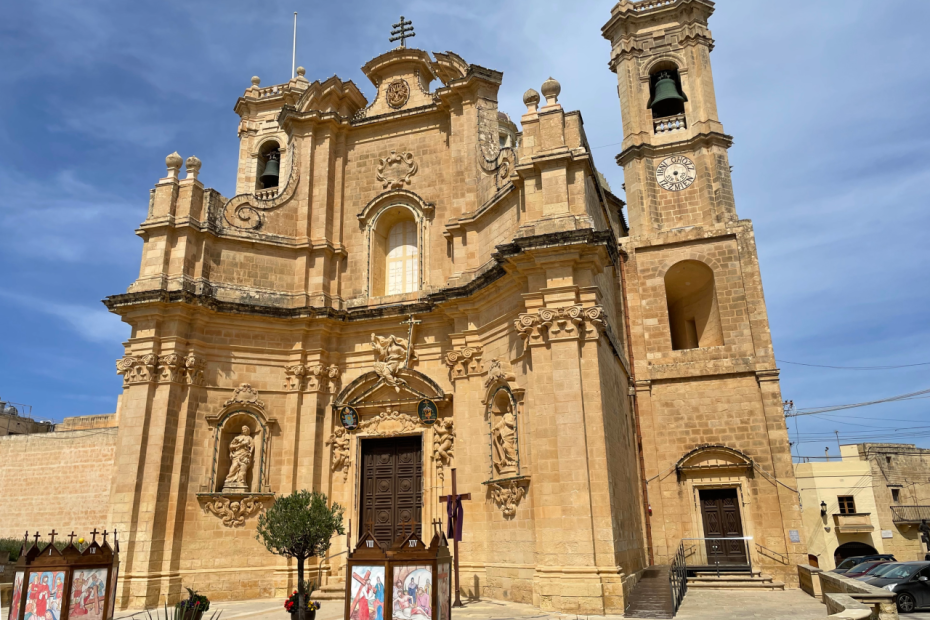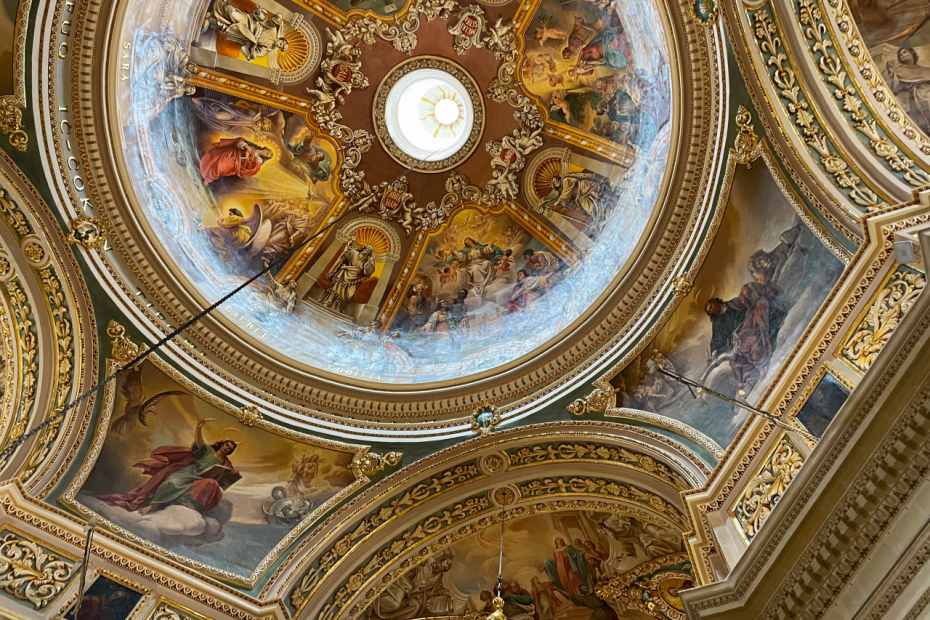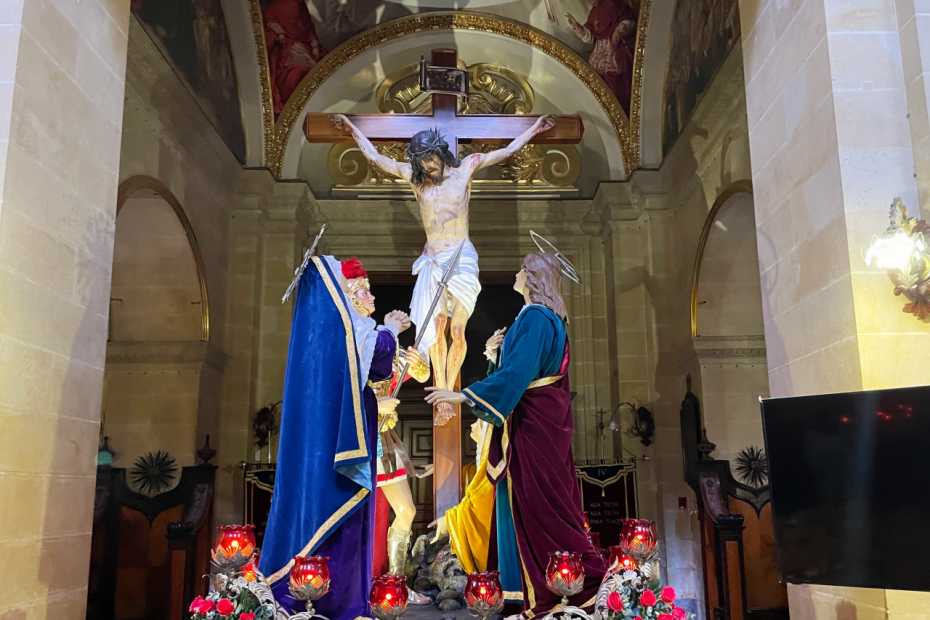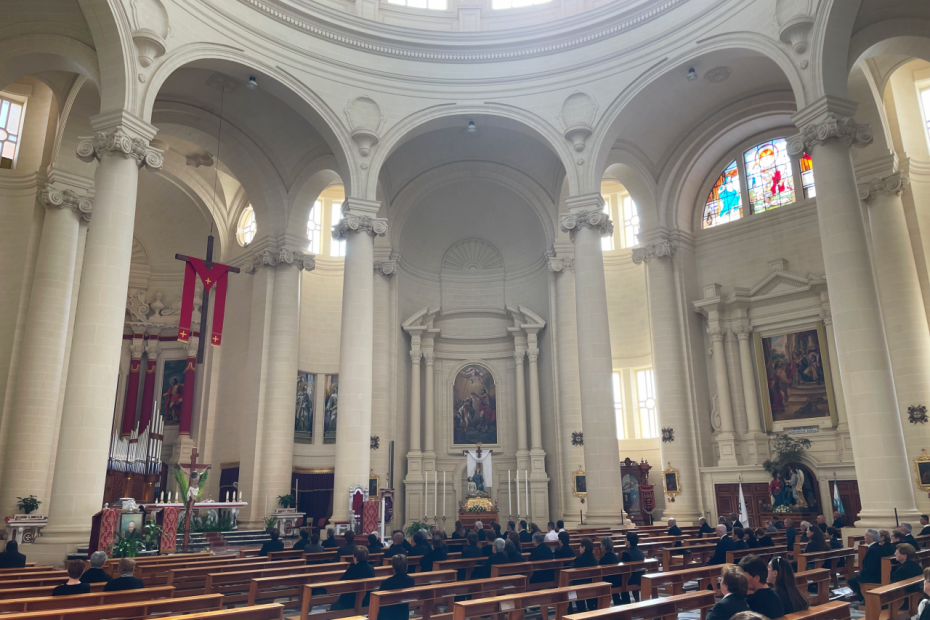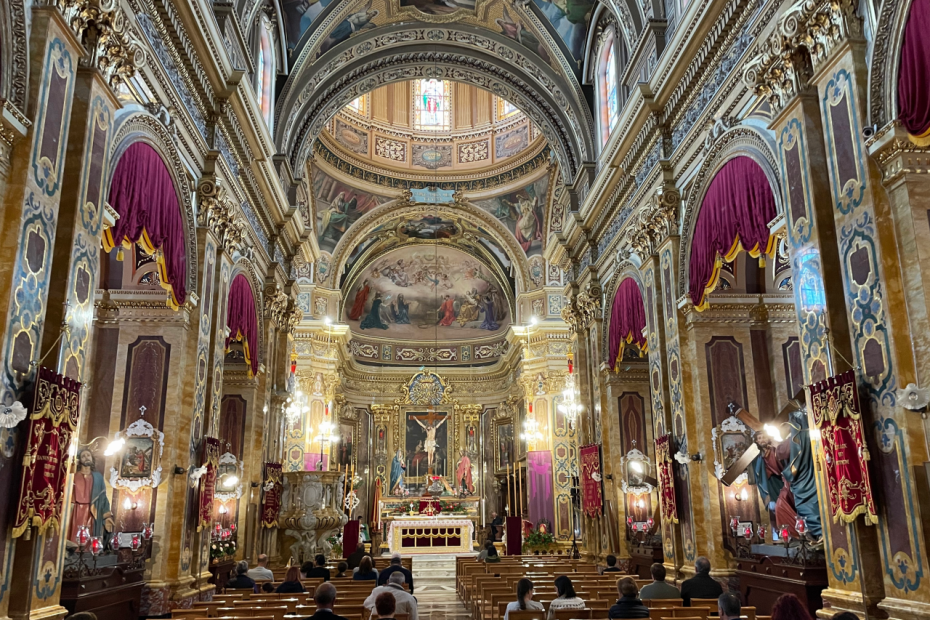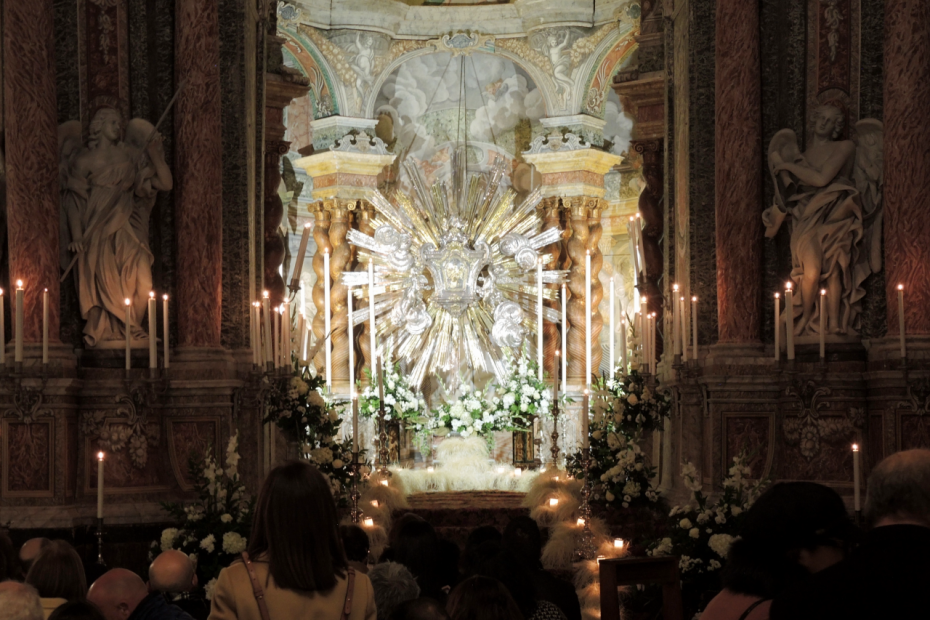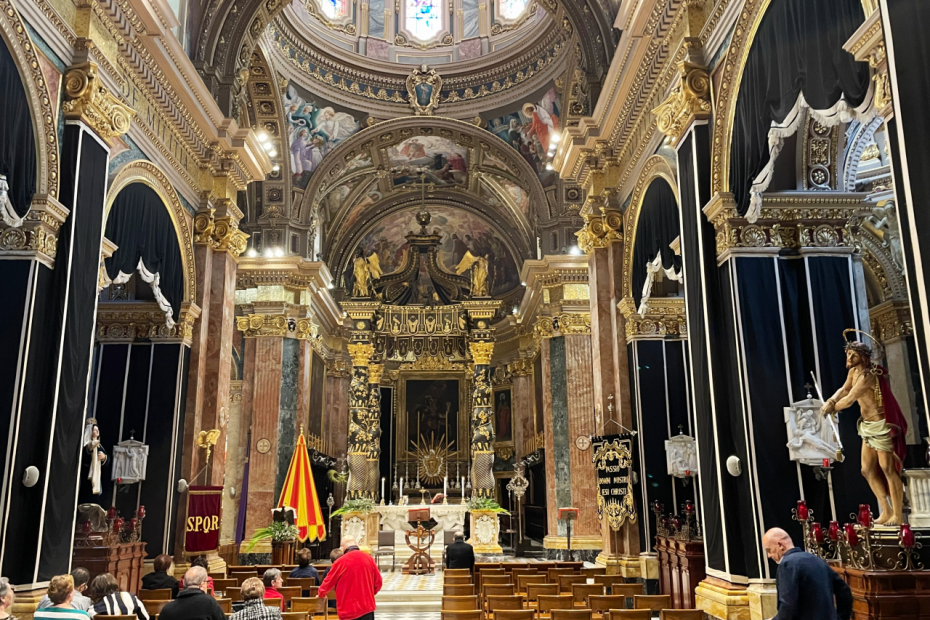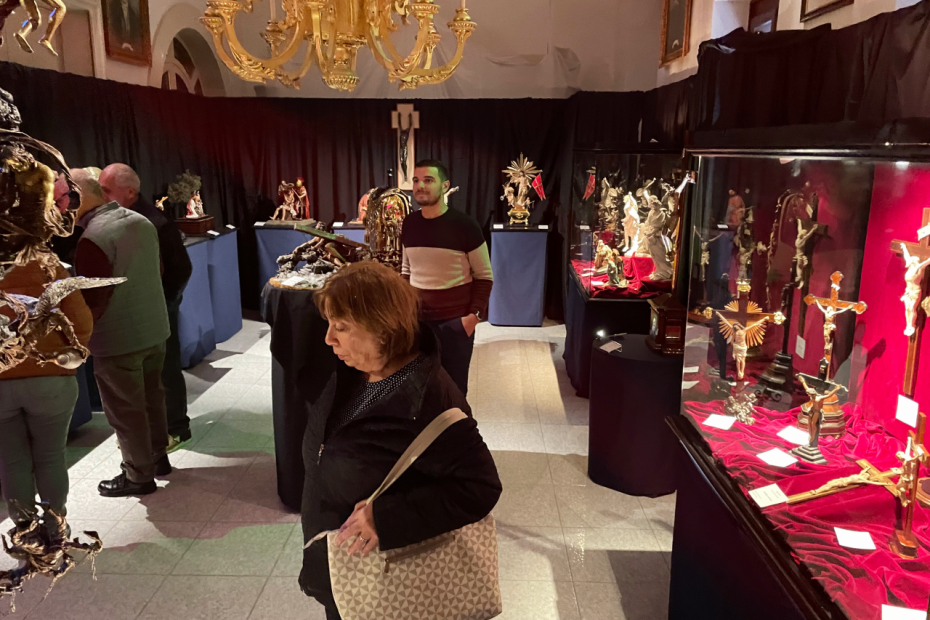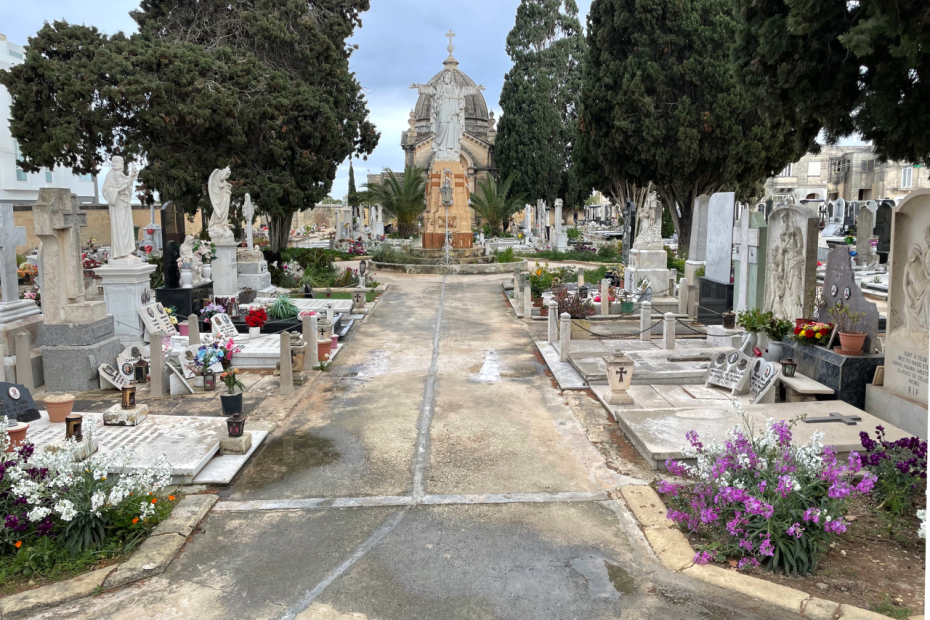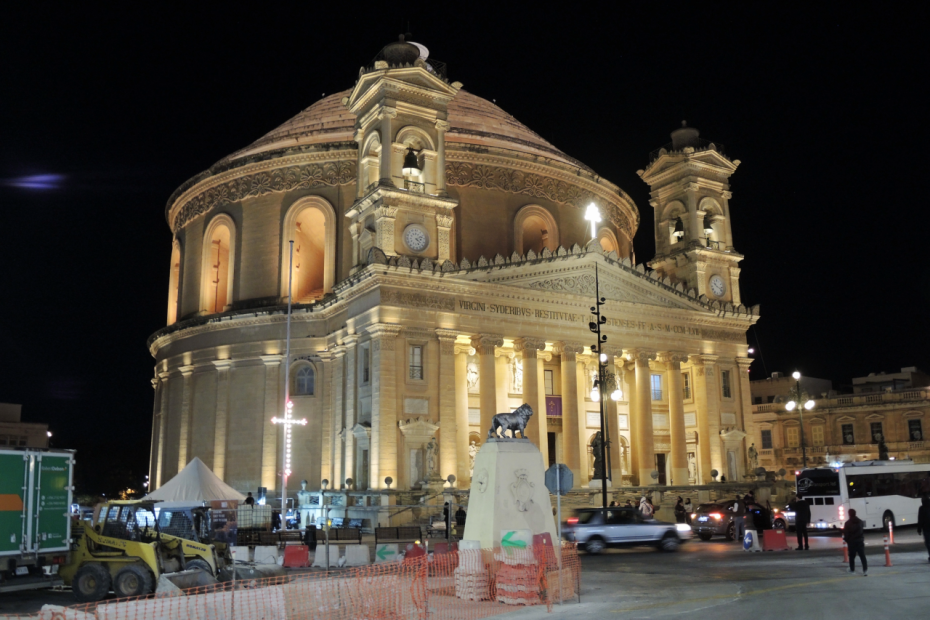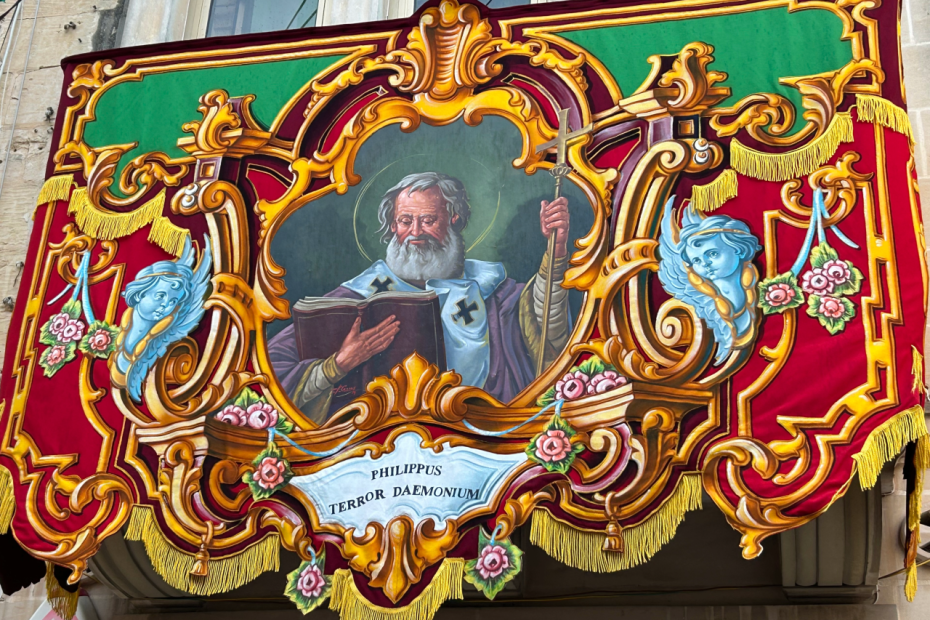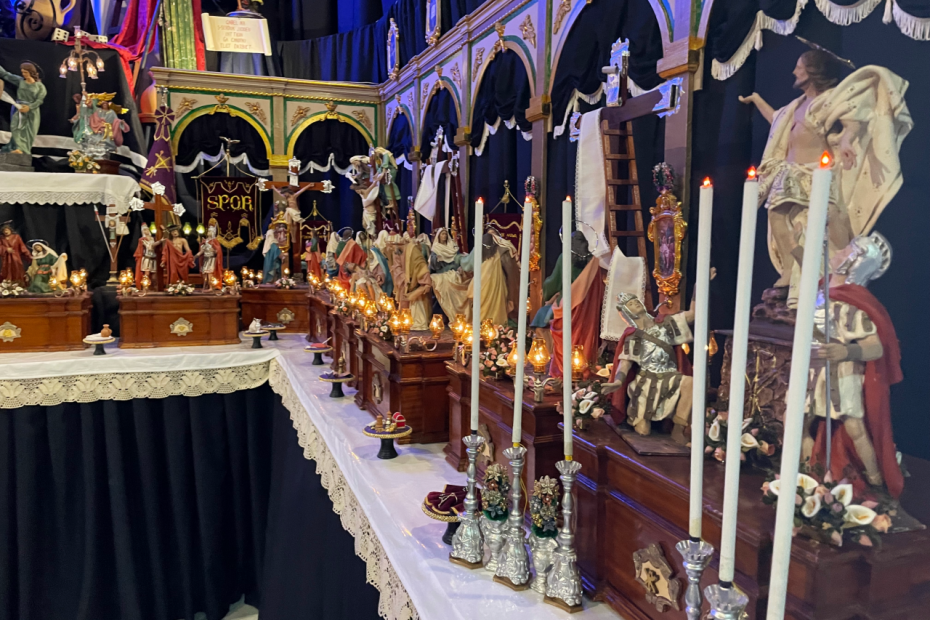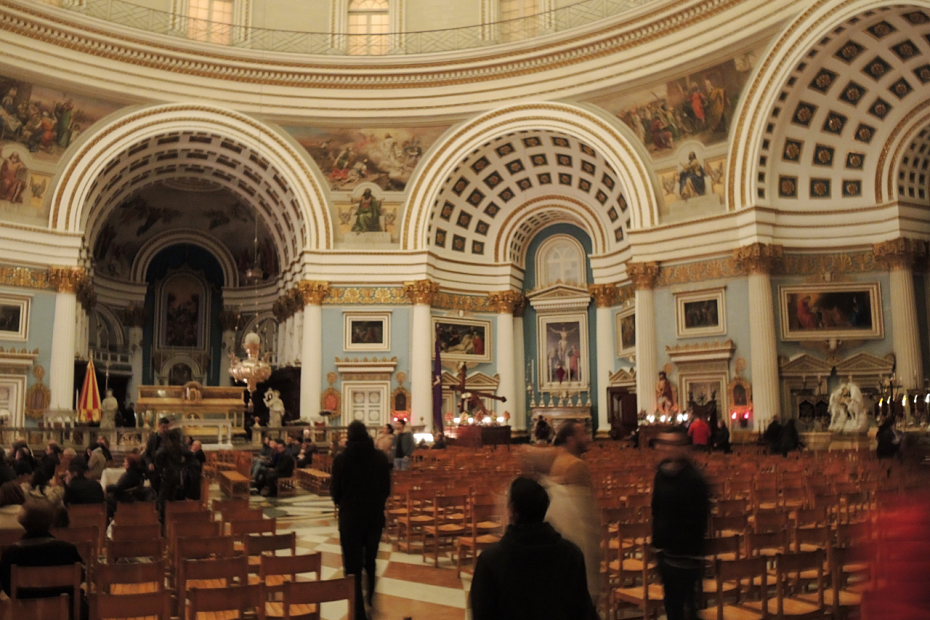Maltese Catholicism stands out in the world for how visible, material, performative, and public it is. The number of lavish baroque and neoclassical churches in Malta, in villages that often still comprise under 10,000 people, is truly remarkable. Parish feasts, Holy Week processions and altars of repose, and displays of Christmas presepe, all key seasonal events in the cycle of Maltese Catholic life, play a major role in communicating the faith through aesthetics and observation. They are visited for their beauty, as well as for the religious meaning behind them. “Invisible,” non-public forms of Catholic religiosity certainly merit equal attention, but in so many significant ways, Maltese Catholicism is built on forms of spectacle; on kinds of catechism and practice that appeal particularly to the eye, among other senses.
In Maltese cities like Valletta, Mdina, and Rabat, churches are grand, but they also compete with other elegant historic buildings and fortifications. In the villages, they stand out entirely, usually located at the crest of the hill and always as the pre-eminent building in the landscape. In Gozo, as you look across open fields in many directions from village to village, it is remarkable to see so many enormous churches. And while the exterior facades and domes stand out, the churches tend to be even more elaborately decorated inside.
The building material used for almost every church in Malta, and many other older buildings, is a golden Maltese limestone that is the only locally quarried material available. Inside churches, this stone is often covered in gilding, marble, and silk damask.
The Knights of Malta played an important role in shaping Malta’s aesthetic, introducing the baroque style that was adopted into a vernacular form by talented Maltese artists and architects.1 Neoclassical forms came into vogue in the 19th century. Together these forms characterize the bulk of the religious landscape, though there are a few Gothic and modernist churches on the islands.
Though not part of the plan for the enormous, barrel-vaulted Valletta co-Cathedral originally designed as the main church of the Knights of Malta, Maltese churches almost always have a dome at their center, above the altar. Some are even almost entirely under domes. The neoclassical "Rotunda" Church of Saint John the Baptist in Xewkija, Gozo, a village of about 3500 people, is one example. Rebuilt from 1952-1978, the church places almost the whole structure within a massive 75-meter tall rotunda. Another example, the Sanctuary Basilica of the Assumption of Our Lady in Mosta (rebuilt 1833-1871), is styled as an enormous rendering of the Roman Pantheon, a circle all under one dome.
In addition to the huge, elaborate parish churches, there are hundreds of often very beautiful chapels associated with religious orders, schools, or just attached to parishes. It is commonly said that there is one Catholic church or chapel for every day of the year. In a country whose population only recently surpassed 500,000 people (in 1900 it was still under 200,000, and by World War II, it reached just above 300,000), this seems remarkable. Almost all of the islands’ spectacular churches were built when villages comprised only a few thousand people. Gozo Island, which has only grown in the last decade to about 39,000 people, is home to 15 spectacular parish churches, a national shrine, and two dozen more chapels.
Contemporary readers may wonder how so much attention was lavished by villagers on the churches, in places that still have few other aesthetic landmarks. The Knights certainly encouraged building but focused their attention on the major cities. The villages, though, as noted in the overview, lacked even a town hall. The Knights and the British rulers left the parishes to fulfill many civic functions. In that context, as interviewees recounted it, villagers built churches both out of a spirit of deep religious fervor and a bit of rivalry. The lavish decoration of churches was not something imposed on them, but rather a way for villages not to be outdone by others. Jeremy Boissevain wrote in the late 1960s, “A parish church is more than just a central place of worship; it is the focal point of a great deal of the social life of a village and the repository of its collective wealth… Its gilded ceilings and silver altar front, its damask tapestries and embroidered vestments, its precious votive offerings represent a fortune amassed over centuries from the savings and bequests of countless villagers.”2
Churches were replaced, added to, and improved over time, and villagers continue to donate items that enhance the churches. Though attitudes may be shifting, villagers saw this as their collective achievement, not as something belonging to someone else, a separate group of clerics.3 One manifestation of this was the parish feast in Żebbuġ, where items from the parish treasury—silver objects, brocade vestments, etc.—were put on display for villagers to come to see during the feast, acknowledging the generosity that had provided them.
A good deal of the visual imagery in Maltese Catholicism is coded to signal rank and hierarchy. The colors on the silken capes of confraternity members, the placement of a ceremonial crimson and gold umbrella signaling that a church is a basilica, the decorations of churches year-round or highly decorated sepulchres during the triduum, and the costumes of Roman soldiers in a Good Friday procession all convey status, whether for people and organizations within the parish or for one village/parish compared to another.
Inside homes today, interviewees say that religious pictures and statues are most common in bedrooms and kitchens, including images like Our Lady of Carmel, a Crucifix, or a small shrine with a few holy pictures and statues.
Beyond the churches and the band clubs, the exterior architectural landscape of Malta’s villages is relatively monotonous, though not unattractive. When a feast comes, baroque banners on the streets and lights adorning churches and clubs suddenly change all of that, adding bright splashes of color. In Holy Week, too, when banners also go up, churches are redecorated, and colorful processions come out in the street, or on Easter when huge white flags flutter, Maltese show that they know how to use their baroque aesthetic heritage to its best advantage, to signal that something special is happening that day.
- 1Given that the Knights came from lands now part of France, Spain, Italy, Portugal, and Germany, among other countries, the Maltese baroque aesthetic cannot simply be understood as an import of other countries’ national styles.
- 2Jeremy Boissevain, Hal Farrug: A Village in Malta (New York: Holt Rinehart and Winston, 1969), 63.
- 3In my interviews, I heard reference to a 20th century parish incident also turns out to have been described by Boissevain, Hal Farrug, 61: A parish updated its church, and found that when the new work was unveiled, a priest had, without consulting parishioners, placed his personal seal at the top of an arch. Conflict ensued such that the priest ultimately had to be moved. One night after his departure, parishioners came in, hacked out the crest, and replaced it. As the introduction and other articles here acknowledge, clergy may long have had an exalted place in Maltese life, but faced serious consequences if they failed to consult properly with the villagers on matters important to them, including feasts and decorations.
